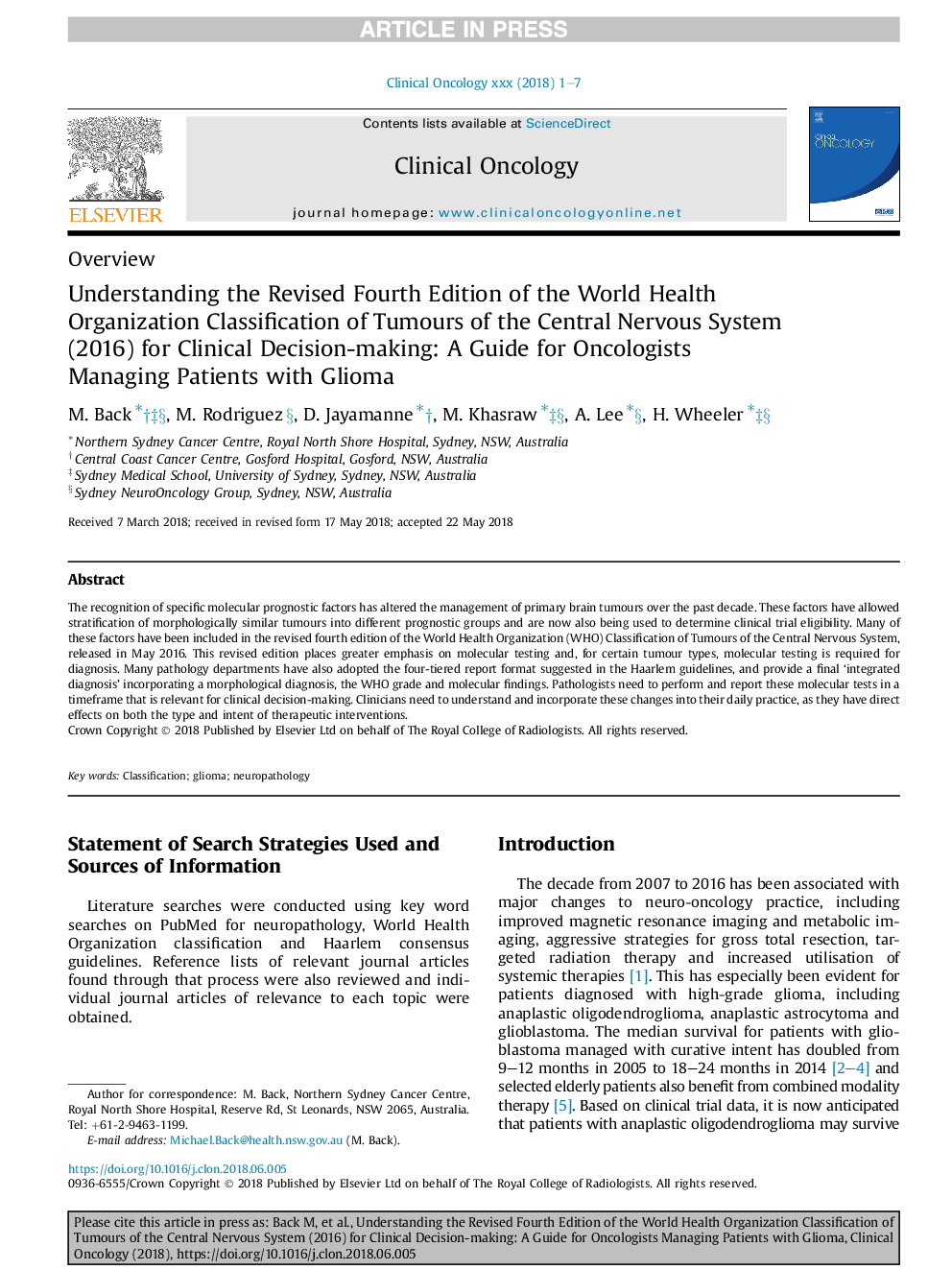| Article ID | Journal | Published Year | Pages | File Type |
|---|---|---|---|---|
| 8785987 | Clinical Oncology | 2018 | 7 Pages |
Abstract
The recognition of specific molecular prognostic factors has altered the management of primary brain tumours over the past decade. These factors have allowed stratification of morphologically similar tumours into different prognostic groups and are now also being used to determine clinical trial eligibility. Many of these factors have been included in the revised fourth edition of the World Health Organization (WHO) Classification of Tumours of the Central Nervous System, released in May 2016. This revised edition places greater emphasis on molecular testing and, for certain tumour types, molecular testing is required for diagnosis. Many pathology departments have also adopted the four-tiered report format suggested in the Haarlem guidelines, and provide a final 'integrated diagnosis' incorporating a morphological diagnosis, the WHO grade and molecular findings. Pathologists need to perform and report these molecular tests in a timeframe that is relevant for clinical decision-making. Clinicians need to understand and incorporate these changes into their daily practice, as they have direct effects on both the type and intent of therapeutic interventions.
Keywords
Related Topics
Health Sciences
Medicine and Dentistry
Oncology
Authors
M. Back, M. Rodriguez, D. Jayamanne, M. Khasraw, A. Lee, H. Wheeler,
